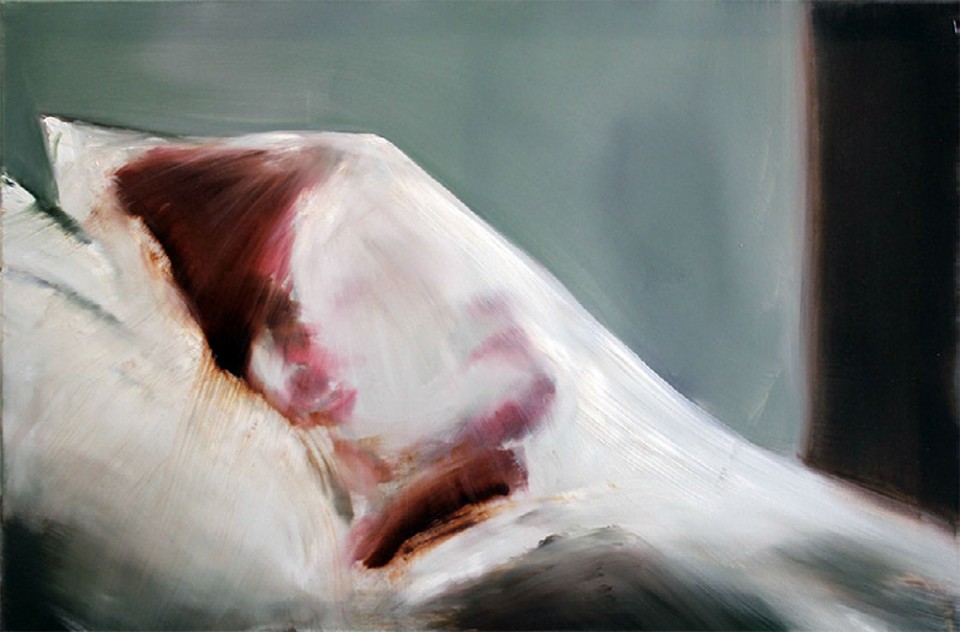
An instant of this
Arte Institute suggests “An instant of this” by Luísa Jacinto.
An instant of this
Luísa Jacinto’s first solo exhibition in Madrid
Exhibiting | March 12 to May 4
Galería Silvestre
Calle Doctor Fourquet 39
28012 Madrid
www.galeriasilvestre.com
A Perpetual Moment
Text by João Silvério, 2016
LuiÌsa Jacinto’s work confronts us with images close to self-referential situations. These images, made in various media such as video, drawing, collage or painting, distance themselves from the practice of mapping her everydaily life in order to build in the viewer a fictional relation with corporeal representations, sometimes fragments of the artist’s body, that thus refer to an anonymous notion of that corporeality and of the gestures and actions revealed by her works. Simultaneously, this procedure introduces an ambiguous understanding of the intimate character of her way of looking and its mundane reverse; without, nonetheless, our comprehension of a visual reference that might point us the place and time to which those recordings refer to.
On the other hand, her work’s titles gain a very singular significance, establishing a web of connections where the word ascends to a recognizable meaning, that LuiÌsa Jacinto integrates in her work, making visual-semantic plays that question us, as in the case of the painting entitled “Slumber”. This word, in its literal translation into portuguese, can be interpreted as somnolence. However, the image depicted by this painting shows us a fragment of a body in a reclining position, as in a deathbed in which the figure is covered by a diaphanous fabric, in an apparently perpetual sleep. This piece is exemplar of the artist’s work, in the way she works and uses the painting technique, just as flat as an image produced by other media; and also because of the structural thought supporting it. Let us then see the exhibition title “An instant of this”, which sends us to a relation with time and, in this way, with death as a paradigm of the remain of the body’s residence, in the soul’s death. We find this correspondence between matter and energy in literature, art history and in the models used as a reference, despite the fact that they aren’t neither quoted nor depicted. The image’s root is found in figuration’s apparent closeness, as if it we’re dealing with a series, even when oppositions and contradictions are established, summoning very disperse ideas and imaginaries.
In this respect, the question of the model is especially interesting in LuiÌsa Jacinto’s oeuvre, because there’s nothing left of it besides a residual image, the starting point for a finished piece. We return to the potency of the word, present in the title “Modorra” (drowsiness), and even in another painting of small dimensions entitled “Read”. Here I recapture the question of tautologies built by the artist between the image and the word, in a repositioning of her look on the phenomenology of events and the subtraction that her painting operates in the depicted act’s context, presentifying it to the viewer as an universal category, and thus as a matrix image that rescues from our imaginary a myriad of visual episodes. The word is here the seminal residence that allows the painting’s occurrence as a process of construction of a pictorial image related to a given moment in the artist’s life: sometimes an unexpected encounter, other times a trip where her gaze was trapped by an incident that survives on the thin layers of the painting, enunciating another movement impossible to detain, because after all painting is the starting point and never the place of arrival.
Another instance of the word, the poem, in the literary voice of EugeÌnio de Andrade, has been a continuous presence for the artist.
One of those poems tells us the following:
The nearest place
The body is never sad;
The body is the nearest
place where the fire sings.
It’s in the soul that death makes the home.

